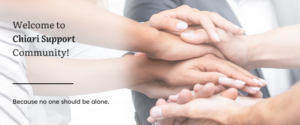
Chiari malformation, is usually present at birth and occurs at the back of the head where the brain and spinal cord connect.
There are four types of Chiari malformations:
Type 1 – occurs when the base of the skull and upper spinal area do not form properly. A type 1 Chiari malformation commonly goes unnoticed until problems arise in the adolescent or adult years of life. The headaches most typical of Chiari I malformations are usually located at the back of the head, and are often made worse by exertion.
Type 2 – sometimes known as an Arnold-Chiari malformation, a type 2 Chiari malformation is caused by part of the back of the brain shifting downward through the bottom of the skull. it is seen in infants who are born with spina bifida and can also be associated with hydrocephalus, a condition in which there is an overproduction or lack of absorption of the cerebral spinal fluid (CSF).
Type 3 – occurs when the back of the brain protrudes out of an opening in the back of the skull area.
Type 4 – occur when the back of the brain fails to develop normally.
Children with Chiari I malformations may start to have symptoms as early as age 2 or 3. Some don’t have any symptoms until they are older. Symptoms can appear any time. They may start or get worse after a trauma, physical effort or straining, such as exercising, coughing or sneezing.
Syringomyelia, common with Chiari, is a cyst in the center of the spinal cord that is filled with fluid. The cyst, also called a syrinx, can get larger and longer over time, putting pressure on the spinal cord and causing symptoms. If not treated, it may also eventually cause nerve damage.
This site is a virtual community intended to be a safe place for patients and family members as young as age 12, to visit for information, discussion, venting and mutual support. Members come from many backgrounds. Some have a strong religious faith, and others no faith; some are children and others adults, rich and poor, graduate educated or taught by life. Our common denominators are that we share a life journey, and we try to help each other.
How is Ben’s Friends Different from Social Media and Other Support Sites?
Our mission at Ben’s Friends is to ensure that patients living with rare diseases or chronic illnesses, as well as their caregivers, family, and friends, have a safe and supportive place to connect with others like them.
We’re interested in you as a person, and in your struggles as a rare disease patient. But we don’t want to know your name or where you live. We won’t even allow you to use your real name when you register for one of our communities. Because when it comes to medical things, anonymity is important in our googly universe. Your information is never shared, and your activity never tracked by adware.
When Ben’s Friends asks for the country and region you live in, that’s in case your fellow members can recommend local resources and help, and so everyone knows what kind of medical system there is where you live. That’s important when it comes to giving and getting support. Because we are all about support, and we’re all in this together..
Ben’s Friends: Safe and Supportive.
And anonymous to keep it that way.
Why create an account?
Posts on the different Ben’s Friends communities can be read by anyone on the internet. You can browse through the different topics and find most of the information you’re looking for but there are many things you won’t be able to do unless you create an account. These include:
Making your own posts. Although you’re able to find useful information just by reading other members’ posts, you might still have a lot of questions in your mind. Either you want to start a new topic to talk about them in detail or you want to reply to a comment on a thread. These won’t be possible unless you create a new user account.
Viewing other members’ profiles. Member profiles include information about the country or region they are from, whether they are a patient or a caregiver, and details about their disease and treatments. Maybe you came across an interesting post and you want to learn more about the member. Or maybe you’re looking for members who are from the same country as you. Having a user account allows you to see other member profiles and find information that may be relevant.
Sending private messages. Aside from being able to post publicly and commenting on a thread, having a user account also allows you to send private messages both to other members and moderators. In case you want to discuss a topic only with a specific person, this is possible by sending private messages when you have created your account.
Click here to create an account and join.
Latest Discussions
- But you don't look sickby LuckyCharmz on April 14, 2024 at 9:19 pm
I know I don’t look sick. I’m lucky if I get 7 “good” day’s a month anymore. My bed has become where I live. I can’t even be the stay at home mom/wife and actually be a helper anymore. […]
- Does the amount it’s protruding have anything to do with the severity or need to get surgeryby Kreyn on February 8, 2024 at 6:30 pm
I was just recently told I have Chiari type 1 after getting an MRI in January. I have a lot of questions but my main one is that I’ve seen people talk about the amount of mm there’s is. I’m […]
- Does surgery get recommended for mild CSF blockage?by wibblywobblybobbly on January 30, 2024 at 10:44 pm
My symptoms have severely impacted my life (can’t work, can’t drive, can’t continue college), but the neurologist that ordered my Cine MRI says I only need physical therapy (and not surgery) […]
- Looking Your Stories - How has this site benefited you?by ModSupport on January 9, 2024 at 1:55 am
@trust_level_0 Dear Chiari Support Member, For over 10 years, the Ben’s Friends online rare patient communities, run & moderated by rare patients themselves, have been a source of support for […]
- I need prayerby anon28235231 on December 6, 2023 at 5:53 pm
I recently had to move in with my daughter and son-in-law and giving up my independence and trying to learn how to live with other people has caused me great stress. Every day I get more anxious. No […]






